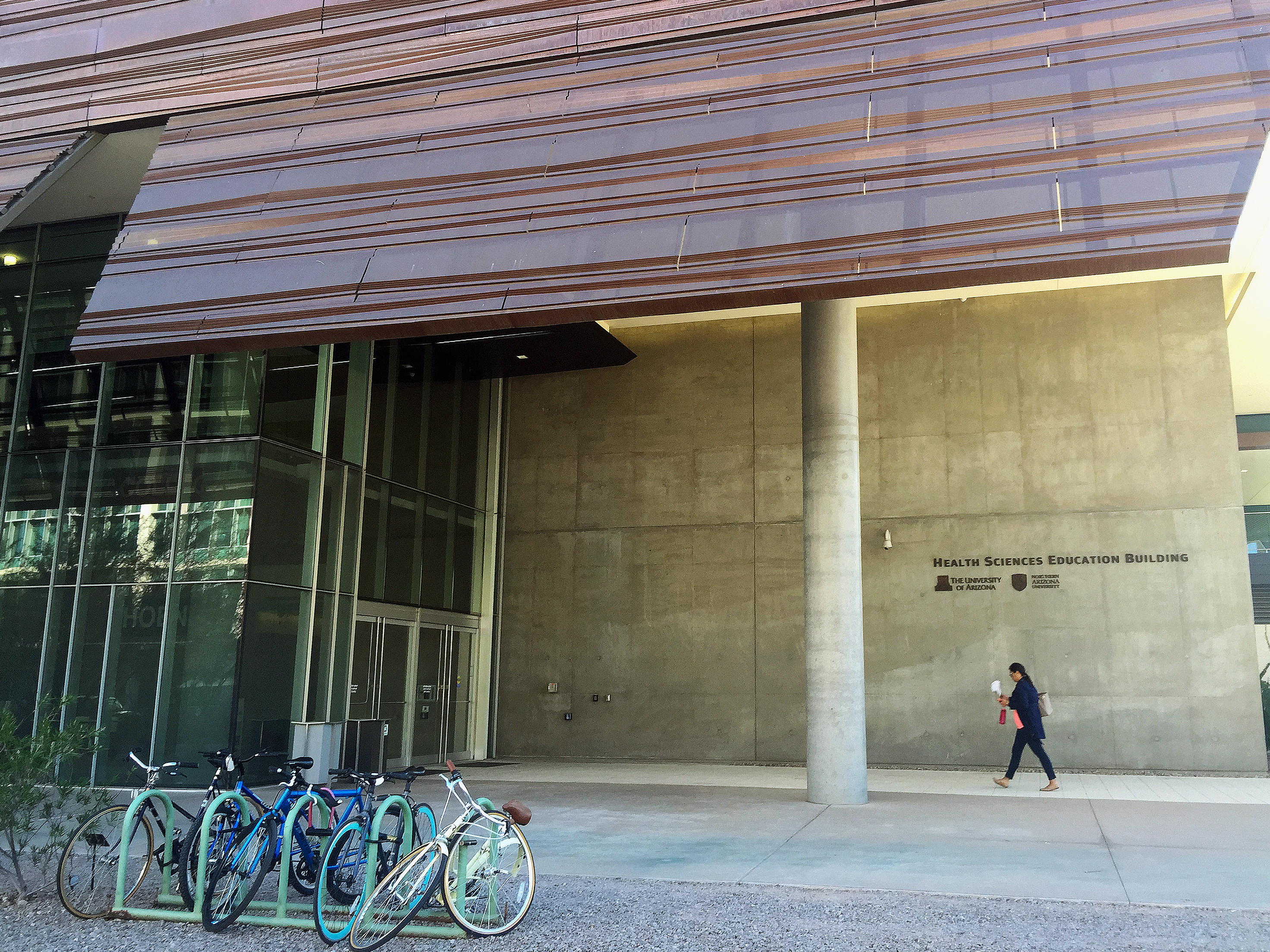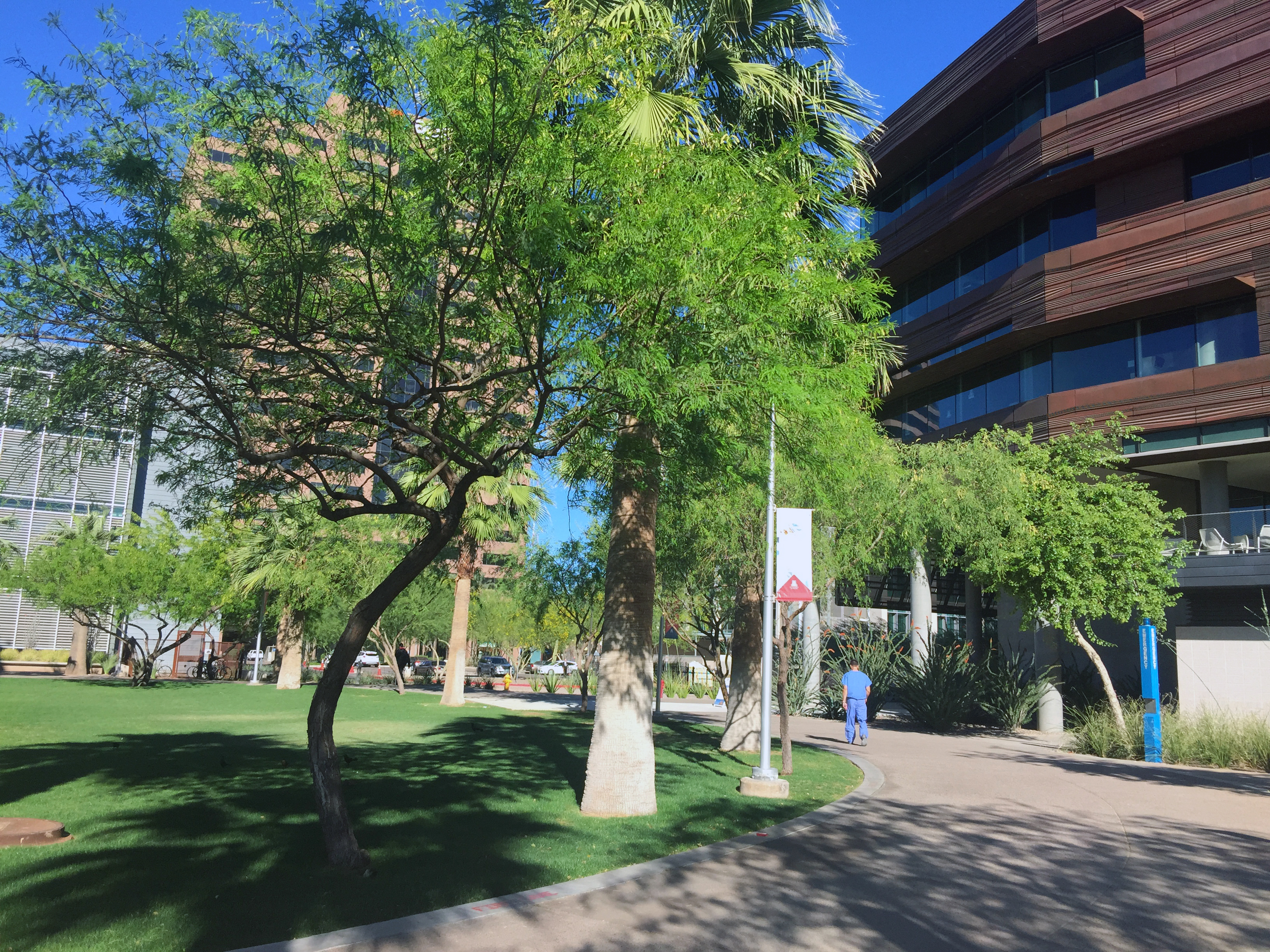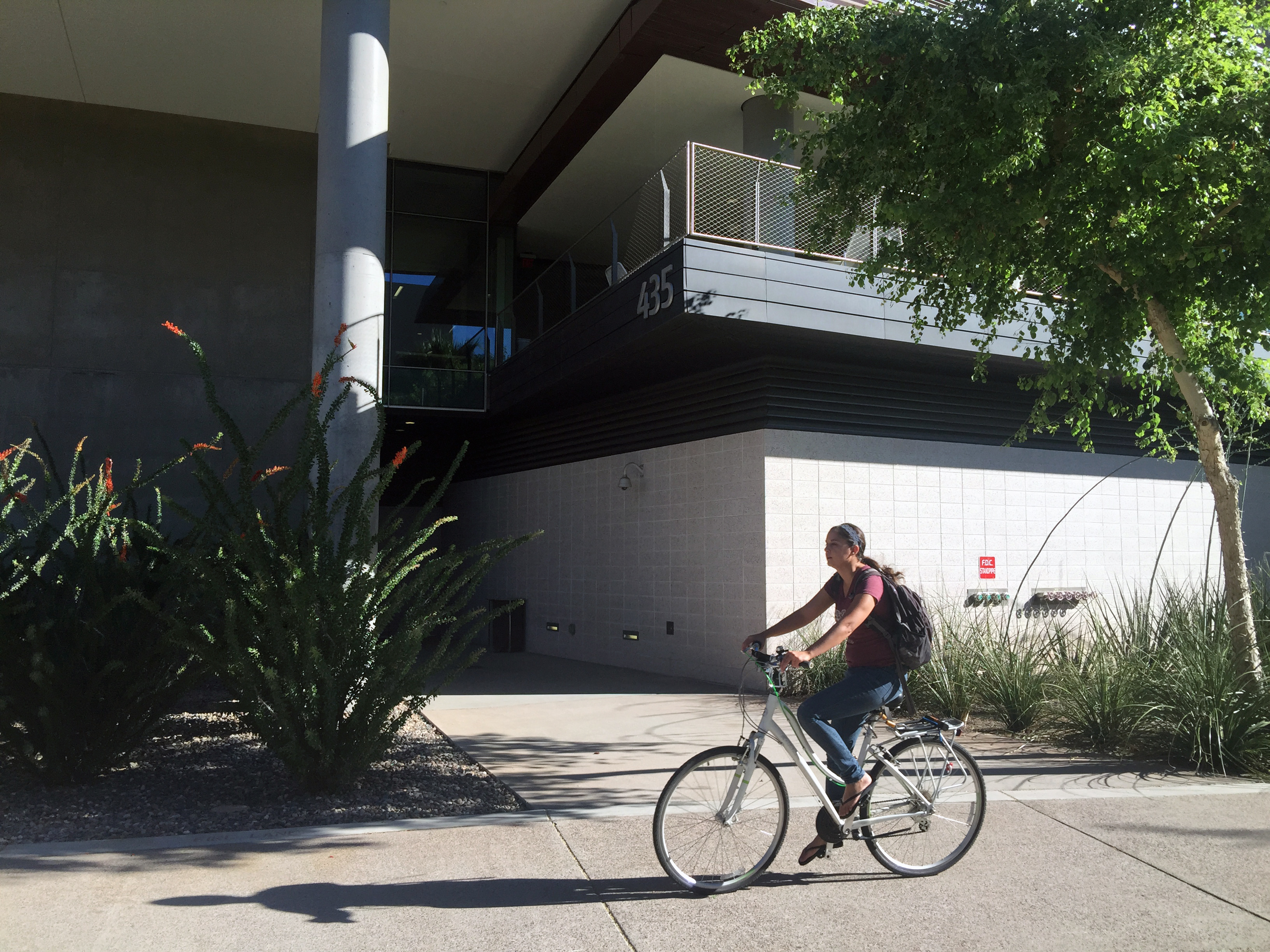
Tucked inside the shared Health Sciences Education Building in Downtown Phoenix, Flagstaff’s own Northern Arizona University (NAU) — one of seven tenants on the 30-acre Phoenix Biomedical Campus — is quietly growing in a big way.
Beginning with just 49 students across two graduate programs in 2012, the student population has increased by 430 percent in four years.
Now with 260 masters and doctoral students, the offerings have expanded from physician assistant and physical therapy tracks, to include occupational therapy and most recently athletic training, which starts in July.
The numbers may seem staggering, but the school’s success certainly isn’t a fluke, according to Christy Farley, chief administrative officer for NAU at the Phoenix Biomedical Campus.
“Our students choose to be here,” she said. “We have applicants from all over the United States and internationally who are looking at this facility, and choosing this as the location that they want to be in.”
The overall student population in Downtown Phoenix is often attributed to Arizona State University’s (ASU) ever-expanding footprint, or the University of Arizona’s (UofA) renowned medical and pharmacy schools.

While less publicized, NAU’s satellite campus in Downtown Phoenix contributes a growing number of highly skilled graduates to the health care workforce, filling a much-needed niche in Arizona. It’s the state’s unique public university offering programs in physical therapy, physician assistant, occupational therapy and athletic training.
“We’re thrilled at the student response and the health care-provider response to our graduates,” Farley said. “It’s a good partnership on behalf of a really expanding area of Arizona’s economy.”
In addition to working with the City of Phoenix, which owns the Phoenix Biomedical Campus, NAU enjoys close ties with the UofA, Translational Genomics Research Institute (TGen) and ASU.
In 2012, NAU and UofA shared the construction and leasing costs of the Health Sciences Education Building, and pool resources when it comes to recruiting high-level professionals. According to Farley, it makes sense to share things like faculty, lab space, student support staff, library and information technology resources.
The students also benefit from “inter-professional” education across universities, where a medical student from UofA, a physician assistant student from NAU and a nursing student from ASU can all work together on a patient case study. This holistic “team approach” is the direction health care facilities are headed, according to Farley, and aids tremendously in acquiring complex job skills.

Rigorous educational opportunities and nationally-ranked programs make NAU desirable among prospective students, but the location is also a big selling point.
“The downtown campus attracts graduate-level students who enjoy being in an area with a lot of other young professionals,” Farley said, “in addition to just the downtown vibrancy of restaurants, entertainment and athletic events.”
Flashy new buildings like UofA’s Biosciences Partnership Building may not be on the immediate horizon for NAU, but it’s certainly growing from within. When the Health Sciences Education Building was built in 2012, several areas were shelled out anticipating future expansion, and the final build-out of those areas concludes this summer.
In three years, Farley anticipates NAU to grow from 260 students to 440, bringing even more residents and revenue downtown. In fiscal year 2014, NAU’s Phoenix Biomedical Campus programs made an economic impact of $17.5 million.
Based on projections, additional physical infrastructure may be an eventuality, but in the meantime, Farley is just trying to keep up with the tremendous student and workforce demand for NAU’s biomedical campus programs.
“We’re very happy to be in Downtown Phoenix,” she said.




